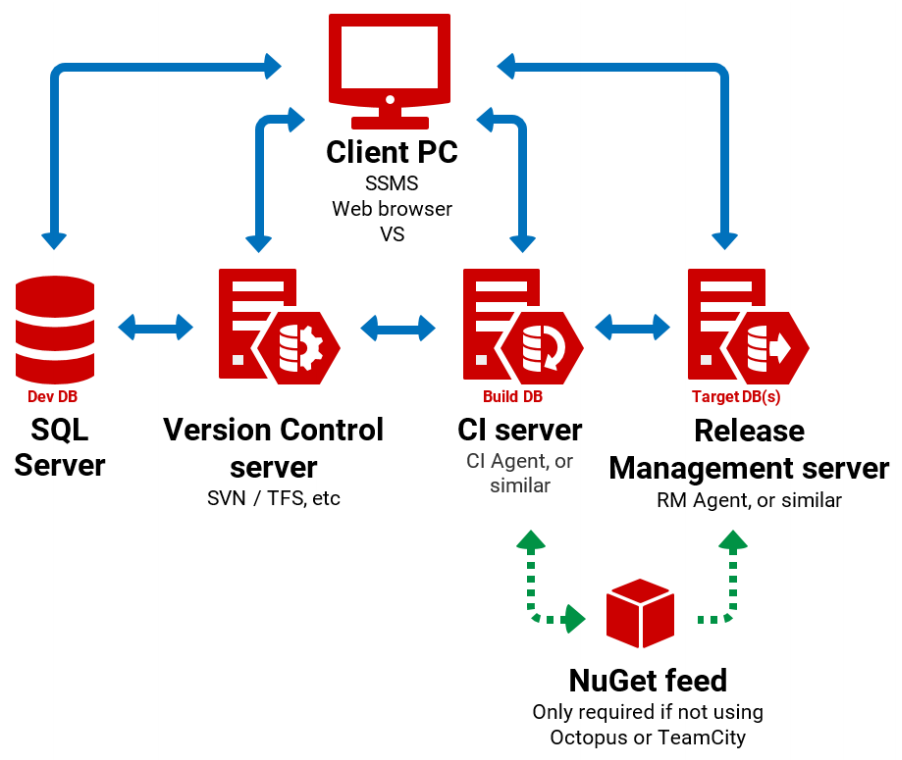
SQL Change Automation allows you to develop and deploy changes to a SQL Server database. It enables you to automate validation and testing, which can be performed on build and release management systems such as Azure DevOps, TeamCity and Octopus Deploy.
When developing a database, SQL Change Automation keeps track of the changes in a project folder. When it comes to release a new version, SQL Change Automation can use the project folder to produce a deployment package which can be run on the database to update it.
One way of thinking about the deployment process is 'make my database look like what's described in this SQL Change Automation project'. The state of the database is primarily represented as a set of scripts that describe how to take the database from one state to another. SQL Change Automation evaluates which scripts to run on any given database to update it. Therefore, the project folder is considered the single source of truth for how the database ought to look. This process is the same regardless of the database environment, which means deployments are repeatable and consistent.
SQL Change Automation is designed to be integrated with source control systems. A SQL Change Automation project consists of files, mainly SQL scripts, stored under a specific folder structure. Therefore, projects can be tracked with source control without any extra configuration.
SQL Change Automation is part of the SQL Toolbelt. When used alongside other SQL Toolbelt tools, such as SQL Test and SQL Data Generator, you can set up a full continuous delivery process for your database.
If you haven’t already done so, you can download the SQL Toolbelt installer.
SQL Change Automation is made up of three components:
Learn more about SQL Change Automation's components.
SQL Change Automation helps apply Continuous Integration (CI) and Continuous Delivery (CD) to database development. SQL Change Automation provides a set of PowerShell cmdlets which can automate the build and release process. There are also add-ons for some build and release systems that wrap the functionality provided by the PowerShell components.
A typical SQL Change Automation pipeline might look like this:

And a typical workflow might look like this:
For more information see Setting Up SQL Change Automation
It's possible to use the build and release features provided by SQL Change Automation with existing SQL Source Control projects.
For more information about how SQL Source Control relates to SQL Change Automation see SQL Change Automation projects.